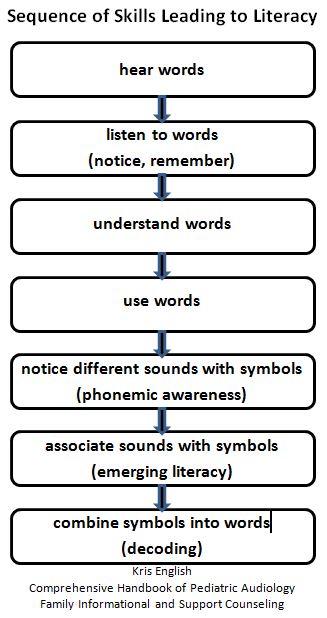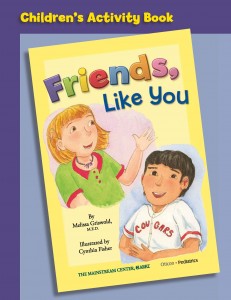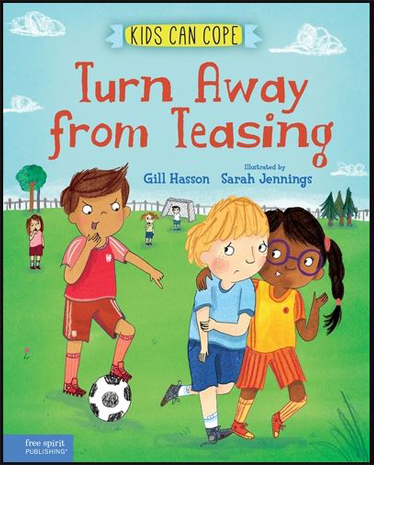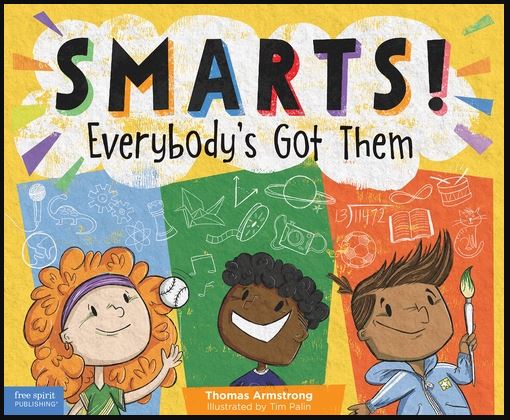Related Products
For Parents
Related Teacher Tools Takeout Items
Developing Your Child’s Reading Skills
The love of reading starts at home! Here are 10 ways that families can improve their child’s reading skills, with or without a hearing loss!
 Not all children with hearing loss become successful readers and there is not one way to improve reading ability for all children.
Not all children with hearing loss become successful readers and there is not one way to improve reading ability for all children.
In general, there are four parts needed for children to understand the written word:

- The ability to rapidly decode and attach meaning to new words
- The syntactic (structure of sentences/grammar) and morphological (structure of words/joining parts of words) competence to gain collective meaning from the decoded words
- The ability to hold the meaning in working memory while processing new words
- The ability to apply text processing strategies for the purpose of figuring out unfamiliar words and passages.
So how does one ensure that children with hearing loss learn reading comprehension strategies?
Research encourages conversations with peers and grown-ups before, during and after read-aloud time to nurture literacy, as well as routine conversations with expert communicators such as teachers, peers and parents to help children develop their background knowledge of the language. They also encourage development of phonemic awareness (letter-sound associations) in meaningful contexts through wordplay activities, such as reading in character and using interactive books.

A child with strong language skills is more likely to learn to read as the words already have meaning, he just needs to learn the printed representation. Children with language delays may be learning the meaning of words at the same time as they are trying to learn the printed words. Follow your child’s lead and use stories with known vocabulary and topics interesting to him.
- Read many books to your child! He will develop favorite stories and topics.
- If your child is primarily using his listening skills to learn, use stories that he is familiar with and have him follow your finger under the words as you read aloud. For very familiar stories he may be able to use his own finger under the words.
- If your child needs visual support, sit side-by-side and encourage him to listen and watch your face as you read, then repeat the line, moving your finger along the words. Repeat with him tracing the words at you read the page again.
- Encourage language development by having him repeat the story plot to a family member or a favorite toy. Ask him
 questions about what happened in the story, what characters may be thinking and what he thinks may happen next. Sometimes ask silly questions so that he can enjoy explaining what is really going on, experienced by characters, etc.
questions about what happened in the story, what characters may be thinking and what he thinks may happen next. Sometimes ask silly questions so that he can enjoy explaining what is really going on, experienced by characters, etc. - If your child uses sign language, be sure to sign the story or use speech and sign at the same time, depending on how your child communicates most easily (see 15 principles for reading to Deaf children).
- Use these strategies to help improve reading skills but remember, reading should be a fun sharing time for the two of you. Use of the strategies should not interfere with his enjoyment of the story and being with you!
 We Give Books is a way for family members to get online books at no cost. A family member can sign up for a free account. Books are specified for each age range: 0-3, 4-7 and 8-10 years. For each book you and your child read on their website, We Give Books will donate a book to one of their partner charities that help build libraries and enrich public schools around the world.
We Give Books is a way for family members to get online books at no cost. A family member can sign up for a free account. Books are specified for each age range: 0-3, 4-7 and 8-10 years. For each book you and your child read on their website, We Give Books will donate a book to one of their partner charities that help build libraries and enrich public schools around the world.1. Set aside a regular time to read to your children every day.
Studies show that regularly reading out loud to children will produce significant gains in reading comprehension, vocabulary, and the decoding of words. Whether your children are preschoolers or preteens, it will increase their desire to read independently.
2. Surround your children with reading material.
Children with a large array of reading materials in their homes score higher on standardized tests. Tempt your kids to read by having a large supply of appealing books and magazines at their reading level. Put the reading materials in cars, bathrooms, bedrooms, family rooms, and even by the TV.
3. Have a family reading time.
Establish a daily 15 to 30 minute time when everyone in the family reads together silently. Seeing you read will inspire your children to read. Just 15 minutes of daily practice is sufficient to increase their reading fluency.
4. Encourage a wide variety of reading activities.
Make reading an integral part of your children’s lives. Have them read menus, roadside signs, game directions, weather reports, movie time listings, and other practical everyday information. Also, make sure they always have something to read in their spare time when they could be waiting for appointments or riding in a car.
5. Develop the library habit.
Entice your children to read more by taking them to the library every few weeks to get new reading materials. The library also offers reading programs for children of all ages that may appeal to your children and further increase their interest in reading.
6. Be knowledgeable about your children’s progress.
Find out what reading skills they are expected to have at each grade level. The school’s curriculum will give you this information. Track their progress in acquiring basic reading skills on report cards and standardized tests.
7. Look for reading problems.
Teachers do not always detect children’s reading problems until they’ve become serious. Find out if your children can sound out words, know sight words, use context to identify unknown words, and clearly understand what they read.
8. Get help promptly for reading problems.
Reading problems do not magically disappear with time. The earlier children receive help, the more likely they will become good readers. Make sure your children receive necessary help from teachers, tutors, or learning centers as soon as you discover a problem.
9. Use a variety of aids to help your children.
To help your children improve their reading, use textbooks, computer programs, books-on-tape, and other materials available in stores. Games are especially good choices because they let children have fun as they work on their skills.
10. Show enthusiasm for your children’s reading.
Your reaction has a great influence on how hard they will try to become good readers. Be sure to give them genuine praise for their efforts.
Sources include:
http://school.familyeducation.com/top-10-ways/improve-reading-skills/38329.html?page=7



